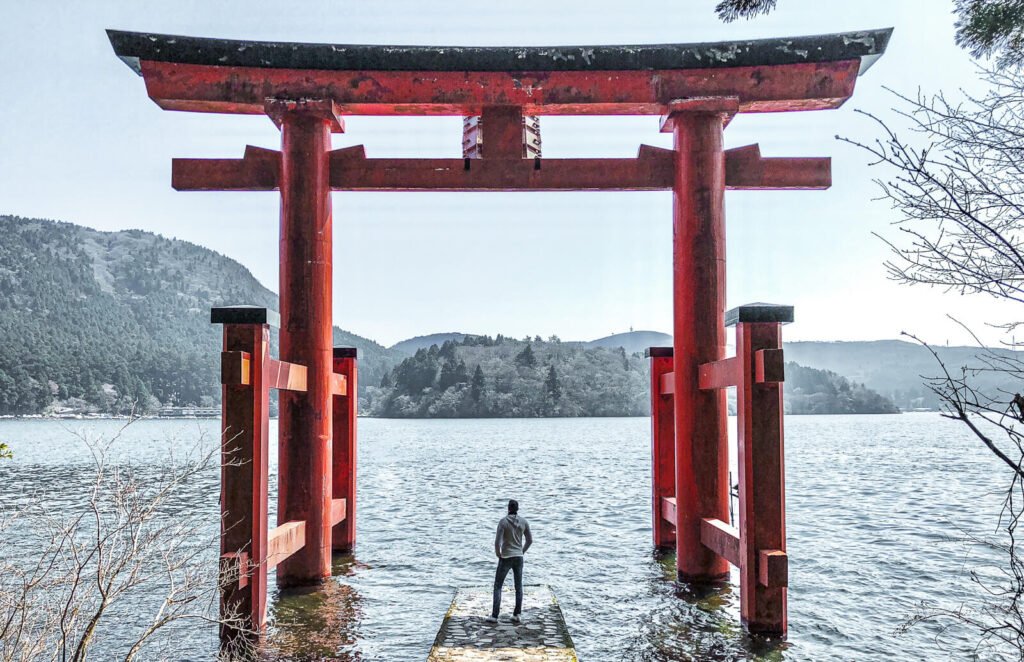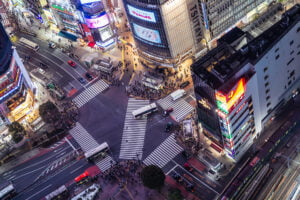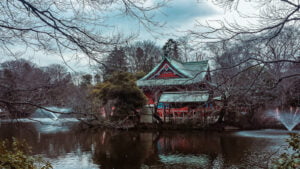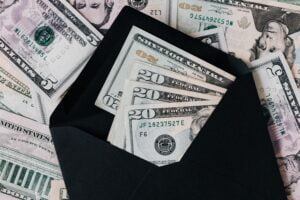Introduction
The Torii Gate. You know it—iconic Japan. But it’s more than just a photo op. It carries weight. History. Culture. Most folks link it with Shintoism. And yeah, it’s a gateway. But not just any gateway. A bridge, really. Between the human world…and the divine. In this little journey, we’ll wander through its story. Its meaning. How it still shapes life in Japan today.
Before we dive in, quick heads up. If you find my tips helpful—and click any of the links—it actually helps support this blog. Don’t worry, costs you nothing. Yup, zero extra. But it keeps my travel stories alive. Honestly, it’s kinda cool knowing you’re helping me keep these adventures coming. So, thanks. Really.
Understanding the Torii Gate
What is a Torii Gate?
I still remember it. The first time I walked under that towering vermilion torii at Meiji Shrine. People all around—locals, tourists, chatting, snapping photos. But once you step through…everything shifts. A hush falls. Feels almost unreal. Like the city noise just hits pause. Like someone quietly saying, “Leave it all behind. Step in here. This world’s different.” And for a moment, it really is.
The Origin of Torii Gates
As a history nerd, I can’t help it. Stuff like this fascinates me. Torii gates—more than just fancy arches. They carry stories. Blend of Japan’s myths, plus little whispers from neighboring cultures. Last spring, I ended up chatting with this elderly shrine keeper in Kyoto. Sweet guy. Told me about the colors. The shapes. How even shrines built centuries ago…every detail mattered. Crazy, right? You walk by thinking it’s just decoration. But there’s a whole history tucked in there.
Symbolism and Significance
Spiritual Threshold
Every time I pass under a torii, I slow down. Really slow. The city noise? Fades. Just like that. Suddenly, you notice the pine. Or maybe incense drifting through the air. Tiny details hit you differently. For me…it’s like stepping into another world. Quiet. Magical. A side of Japan that doesn’t shout, but whispers.
Protection and Blessings
The bright red of a Torii gate. Striking, right? But it’s not just for show. That color? It’s meant to keep evil spirits away. Protect the sacred space inside. People believe walking through it…you pick up a little blessing. A tiny shield, maybe. Against whatever bad vibes the world throws at you.
Respect for Nature
Shintoism…it’s all about nature. Respect it. Honor it. Torii gates? They often pop up in forests. Or on mountain paths. Not random. Their spot shows something bigger. How the spiritual world…ties in with the natural one. Step through, and you feel it.
Marking Pilgrimage Routes
Many Torii gates are found along pilgrimage routes to shrines and temples. Pilgrims pass through these gates as they embark on their spiritual journeys, seeking purification and enlightenment.
Torii Gates Across Japan







Japan is home to numerous famous shrines adorned with Torii gates, each offering a unique cultural and spiritual experience. Here are some of the most renowned shrines known for their impressive Torii gate-lined paths:
- Fushimi Inari Taisha, Kyoto: Probably the most famous of them all. Thousands of vermilion gates crawling up Mount Inari. A hike, but also a journey. Each step takes you deeper into the tunnel of red. Dedicated to Inari, the fox deity. God of prosperity. You walk it and feel like luck might just follow.
- Itsukushima Shrine, Miyajima: The floating one. At high tide the Torii gate rises from the water. Looks unreal. Like magic. Vermilion wood against the blue sea—something you don’t forget. One of those “yep, this is Japan” kind of views.
- Nezu Shrine, Tokyo: Hidden in the middle of the city. A tunnel of red gates winding through green gardens. Quiet, shaded, calm. Old buildings scattered around, history in every step. Hard to believe Shibuya is just a few train stops away.
- Kasuga Taisha, Nara: Lanterns everywhere. Stone ones, hanging ones, glowing softly. Hundreds of Kasuga Torii lining the approach. Walk through and the air feels heavier. Mystical. Like the past hasn’t really left.
- Hie Shrine, Tokyo: Famous stairway. And that one bright red Torii at the base. Locals stop for pictures, tourists too. But it’s not just for show. It’s a symbol. A welcome. A warning. A reminder.
- Tsurugaoka Hachimangu, Kamakura: A shrine with history dripping from every corner. Long approach, lined with Torii. Always buzzing—pilgrims, tourists, school trips. Yet still, it has that pull. That feeling you’re brushing against something older than yourself.
- Hakone Shrine, Lake Ashi: Nestled by the water. One Torii gate stands right in the lake. Quiet. Serene. If the mist rolls in, it’s like stepping into a painting. Mountains in the backdrop, water at your feet. Timeless.
- Sumiyoshi Taisha, Osaka: Different style here. The Taiko-bashi bridge arches dramatically, leading you in. Red Taiko Torii flanking the way. It’s bold. Striking. Almost theatrical. Osaka’s energy bottled up in a shrine.
- Takayama Inari Shrine, Aomori: Black Torii gates. Dark against the forest. Unsettling. Beautiful. Memorable. They don’t blend in. They stand out like shadows guarding a path. A very different atmosphere—quiet but powerful.
- Takamatsu Zentsuji Temple, Kagawa: Technically Buddhist, but the Torii are here too. Line of gates stretching into calmness. Unique, serene. A place where you don’t just visit—you stop. You breathe. You let it sink in.
These famous shrines with their Torii gates not only offer insights into Japanese spirituality but also provide visitors with breathtaking and culturally enriching experiences. They are an integral part of Japan’s cultural heritage, drawing visitors from around the world to witness their beauty and significance.
You may also like to read : Kichijoji: Unveiling the Charm of Tokyo’s Hidden Gem
Different types of Torii Gates
There are several different types of Torii gates found in Japan, each with its own unique characteristics and cultural significance. Let’s explore some of the most notable ones:
- Shime Torii: Different from the grand ones you usually see. Simple. Bare. No paint. No drama. Just twisted straw ropes tied together. They show where the sacred begins—especially during festivals or rituals. But they don’t last forever. Temporary. Fragile. After a while, they’re replaced. Again and again. A reminder that even sacred things…sometimes come and go.
- Myojin Torii: You spot them quick. The upper beam—curved, smooth. Almost elegant, almost too graceful. They stand tall at big shrines. Not shy at all. They don’t just mark an entrance. They announce it. A kind of grand doorway saying—yes, you’re stepping onto sacred ground now.
- Ryobu Torii: Not one, but two. Standing side by side, like twins guarding a path. You’ll spot them at Buddhist temples, sometimes at Shinto shrines too. One gate is this world. The solid, physical one. The other? A step into the unseen, the spiritual. Together they remind you—life isn’t just what you touch. It’s also what you can’t.
- Kasuga Torii: Bright vermilion. Round pillars. You’ll see them in Nara, at Kasuga Taisha Shrine. Hundreds of them, lined up. Path glowing red, stretching on. Walk through and it feels otherworldly. Almost like stepping into a dream.
- Ise Torii: Different vibe. Plain. Unpainted. Cypress wood, nothing fancy. But the weight of tradition—it’s huge. These gates belong to Ise Jingu, one of Japan’s holiest shrines. Every 20 years? Rebuilt. Again and again. A thousand-year rhythm that still hasn’t stopped.
- Zuishin Torii: Smaller, humbler. Usually at shrine entrances. Made of stone. Round shape on the top—easy to spot. They honor Zuishin, a guardian deity. One meant to shield you from misfortune, from spirits you don’t wanna meet.
- Hokora Torii: Miniature ones. Tiny, really. You find them at little roadside altars. Or home shrines. Like pocket-sized versions of the real deal. Not for crowds. For personal worship. Quiet faith.
- Senbon Torii: The famous kind. “Thousands of gates.” Fushimi Inari in Kyoto—you know the place. Endless tunnel of red. Up the mountain, twisting and turning. People walk through and get lost in the rhythm of it. Almost like the gates themselves are carrying you forward.
- Shiromatsu Torii: Painted white. Stark. Pure. Found around Hiroshima, especially near Itsukushima Shrine on Miyajima Island. Against the green and the sea—they stand out sharp. A different kind of beauty.
- Nageire Torii: Maybe the most magical. Placed right in the water. Looks like floating. The big one at Itsukushima? You’ve seen the photos. At high tide, it rises from the sea like something alive. Almost unreal. Almost too perfect.
Regional Variations
Torii gates come in various shapes and sizes, and their design can vary by region. In some areas, they are simple and rustic, while in others, they are intricate and ornate. These regional variations reflect the diversity of Japanese culture.
Crafting a Torii Gate
Traditional Craftsmanship
The construction of a Torii gate is a meticulous process that requires skilled craftsmanship. Carpenters use traditional techniques and materials to create these iconic structures, ensuring they endure for generations.
Ritual Blessing
Before a Torii gate is erected, it undergoes a ritual blessing to purify it and invoke the protection of the kami, or spirits. This ceremony is a testament to the spiritual significance of these gates.
Modern Interpretations
Beyond Religion
While Torii gates are closely associated with Shintoism, they have transcended religious boundaries. Many non-religious sites and even private properties have incorporated Torii gates as decorative elements, emphasizing their aesthetic appeal.
Pop Culture
In recent years, Torii gates have made appearances in popular culture, including movies, anime, and video games. Their distinctive appearance adds a touch of authenticity to portrayals of Japanese settings.
Conclusion
Whenever I see kids dashing under a torii during a festival…or old couples pausing to bow before a shrine, I pause too. It hits me. Everyday life here…it’s tangled up with something ancient. These gates? They aren’t just markers. They’re bridges. Between generations. Between beliefs. Between stories. Somehow, walking past one, you feel it.
Frequently Asked Questions
1. What is the significance of the red color of Torii gates?
The vibrant red color of Torii gates symbolizes protection against malevolent spirits and is a prominent color in Japanese folklore associated with warding off evil.
2. Can anyone pass through a Torii gate, or is it reserved for specific individuals?
Torii gates are typically open to anyone, regardless of their religious affiliation. They symbolize a threshold between the profane and sacred, inviting all to enter.
3. Are Torii gates exclusive to Shinto shrines?
While Torii gates are most commonly associated with Shinto shrines, they can also be found in other contexts, such as along pilgrimage routes or as decorative elements in various settings.
4. How are Torii gates maintained over time?
Torii gates require regular maintenance, including repainting and structural repairs. Many shrines and communities take great care to ensure the longevity of these cultural treasures.
5. Are there any specific customs or etiquette when passing through a Torii gate?
When passing through a Torii gate, it is customary to bow as a sign of respect. Additionally, visitors should follow any specific rituals or customs observed at the shrine or sacred site.
These are just a few examples of the diverse types of Torii gates found in Japan. Each type carries its own cultural and historical significance, adding to the rich tapestry of Japanese spirituality and tradition.
more from airashijapan
Navigating Tokyo Transportation efficiently
Tokyo Shibuya Crossing: The World’s Busiest Intersection
Japanese Temples: Senso-ji and Nakamise Shopping Street
Exploring Tokyo: Unveiling Top Attractions and Hidden Gems
Kichijoji: Unveiling the Charm of Tokyo’s Hidden Gem
20 Best Budget Hotels Tokyo: Affordable Stays in the Heart of Japan’s Capital
Yanaka: Old-World Charm and Quaint Streets
The Mystical Allure of the Torii Gate: A Gateway to Japanese Culture
Meiji Shrine: Journeying Through Tokyos Meiji Shrine
Exploring the Heart of Tokyo: Shinjuku
Tokyo Tower: Panoramic City Views
Omoide Yokocho: Tokyo’s Nostalgic Alley of Memories
Akihabara Electric Town : Tech and Anime Haven
Roppongi Tokyo: Fusion Hub of Culture and Nightlife
Harajuku Japan: A trendsetter’s Heaven
Tokyo Autumn 2024: The Ultimate Guide to Experiencing Fall in Japan’s Capital





Pingback: Omoide Yokocho: Tokyo’s Nostalgic Alley of Memories - airashijapan.com
Pingback: Exploring the Heart of Tokyo: Shinjuku - airashijapan.com
Pingback: Roppongi Tokyo: Fusion Hub of Culture and Nightlife - airashijapan.com
Pingback: Harajuku Japan: A Trendsetter’s Haven - airashijapan.com
Pingback: Navigating Tokyo Transportation efficiently - airashijapan.com
Pingback: Hakone Day Trip: A Visual Journey Through Nature - airashijapan.com
Pingback: Recommended Reading for Your Journey to Japan - airashijapan.com
Pingback: Harajuku St: Where Tokyo Street Photography Comes Alive - airashijapan.com
Pingback: Akihabara Electric Town : Tech and Anime Haven - airashijapan.com
Pingback: Spring in Tokyo: Sakura Dreams at Shinjuku Gyoen - airashijapan.com